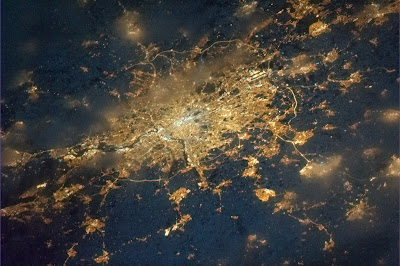The mission is a symbol of China's power and prowess. But look behind the political smokescreen and there is a sharp commercial edge to the country’s space ambitions.
Forty plus years ago it was the United States that inspired a generation growing up in the 1960s by making the ‘giant leap’ from Earth to the Moon.
Capitalism proved it could be first but it was more of a means to an end and became politically unsustainable even before the last men left the Moon in 1972.
How fortunes have changed. Communist China is now the world’s leading and most buoyant economy and has its sights set firmly on the opportunities presented by our nearest planetary neighbour.
Chang'e 3 is scheduled to land on 14 December in a region known as Bay of Rainbows, or Sinus Iridum, located on the upper-left part of the full Moon as viewed from Earth.
The mission blasted off from Xichang in the south of the country at 17.30 GMT on Sunday (1 December) and the spacecraft’s landing module includes a six-wheeled robotic rover called Yutu (translated as Jade Rabbit).
It will be China's first lunar rover as well as becoming the first spacecraft since the Soviet Luna 24 mission in 1976 to make a soft landing on the Moon,
According to information released by its design company the Shanghai Aerospace Systems Engineering Research Institute, the 120 kg Jade Rabbit rover can climb slopes of up to 30 degrees and travel at 200 m per hour.
Its name - chosen in an online poll of 3.4 million voters - derives from an ancient Chinese myth about a rabbit living on the Moon as the pet of the lunar goddess Chang'e.
Both the rover and lander are powered by solar panels but some sources suggest they also carry radioisotope heating units (RHUs) containing plutonium-238 to keep them ‘warm’ during the cold lunar night.
The mission - which will explore the Moon's surface and search for evidence of natural resources such as rare metals - carries a sophisticated payload, including ground-penetrating radar which will gather measurements of the lunar soil and crust.
It marks a milestone in China's ambitious long-term space exploration programme, which includes establishing a permanent space station in Earth orbit.
Future planned launches include a flight to bring back samples of lunar soil to Earth and ultimately sending Chinese nationals to the Moon, in what would likely be the first manned lunar missions since the US Apollo programme in the late 1960s and 1970s.
China knows the Moon is full of plunder that is there for the taking - mainly rare earth elements like titanium and uranium that Earth is really short of. And one day these valuable resources can be mined without limitation.
With NASA currently lacking even its own rocket and relying on the Russians to transport its astronauts to the International Space Station (ISS) it seems, in the words of the chart-topping song ‘Sleeping Satellite’, that the West may have ‘peaked too soon’.
It was the debut single by the British singer-songwriter Tasmin Archer and, in the light of China’s Moon mission and ambitious plans, the lyrics are more poignant than when it was released in 1992.
I blame you for the moonlit sky and the dream that died with the eagles' flight; I blame you for the moonlit nights when I wonder why are the seas still dry? Don't blame this sleeping satellite.
Did we fly to the moon too soon; did we squander the chance in the rush of the race; the reason we chase is lost in romance; and still we try to justify the waste for a taste of man's greatest adventure.
"It's not intended as anti-space travel," says Archer. "It's just the opposite and bemoans the fact that at the time of the anniversary the initiative had not been progressed from the original achievement."
The US may never quite catch up again and will probably one day rue the decision made by its politicians not to re-visit our ‘Sleeping Satellite’ sooner. Perhaps Archer is right and they did peak too soon - and lost a collective sense of adventure in the process.
 |
| Tasmin Archer performing 'Sleeping Satellite' at the SECC in Glasgow in 2008. |










